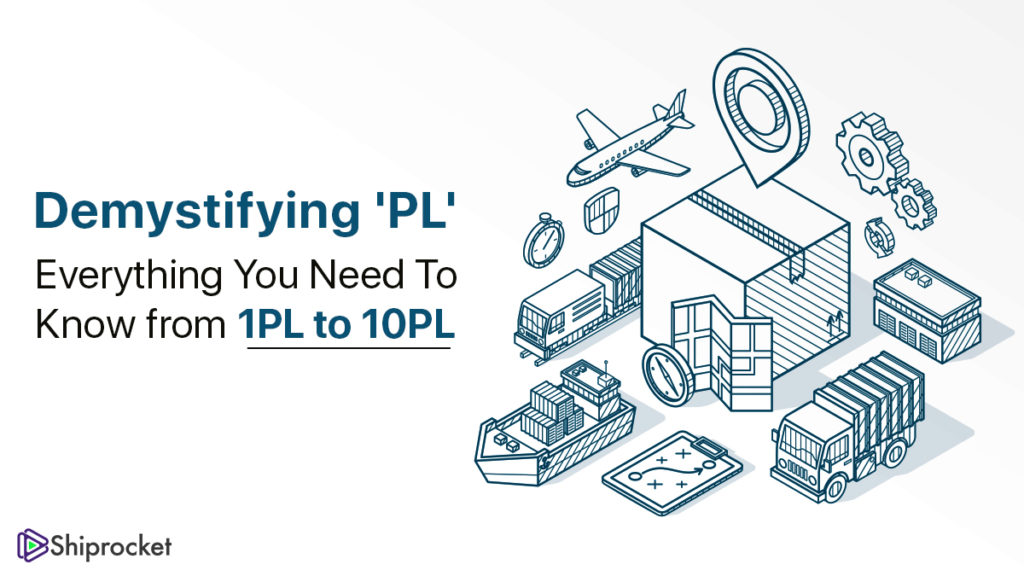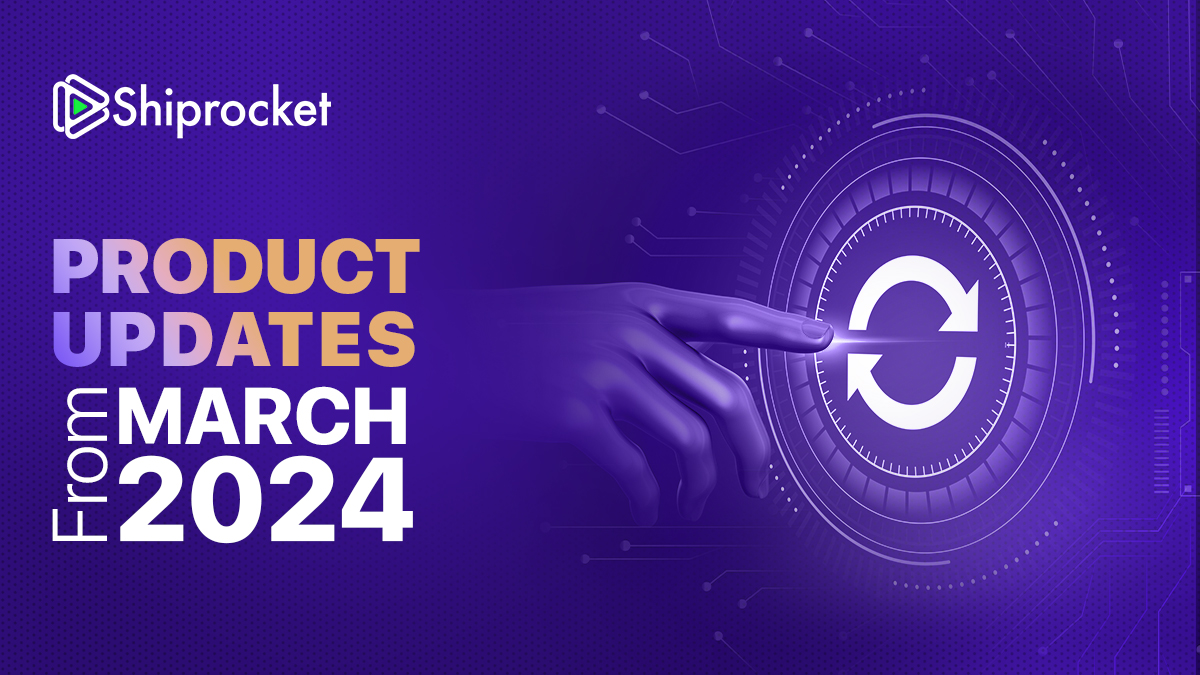1PL to 10PL – Understanding the Various Models of Logistics Service Providers
The progression of eCommerce has been ballistic. Not enough time has passed since India witnessed the evolution of mobile phones. It is an outcome of their enhanced affordability, backed with inexpensive data plans that online shopping has become effortless for everyone. Once an unimaginable thing to achieve, people can now buy anything online, irrespective of the geographical boundaries or currency. At the center of this extraordinary eCommerce sorcery, is logistics. For the uninitiated, logistics simply means to lodge, i.e., to supply, to pass, or to carry forward. The entire system of eCommerce encapsulates lodging products from one end to another. Consequently, logistics is the backbone of the supply chain and it has to be buttery-smooth for faster deliveries and maximum customer satisfaction.

At first, the process was a piece of cake. The manufacturer was the one shipping the products, attributing to zero involvement of third parties. With time, as businesses swelled to territories outside of their native places and national peripheries, the need for logistics services arose. Rendering more than just transportation services, logistics service providers offered a broader range of activities, encompassing a strategic nature. For each set of service activities, a distinctive logistics service provider came to light. As a result of the persistent evolution, which started as a 1PL logistics model has boomed to 10PL. Let’s decipher everything you need to know related to the various party-logistics model and the key areas of differences.
What does PL stands for?
`PL’ stands for ‘Party-Logistics Provider’. It is a supply chain model for logistics experts. Be it 1PL, 3PL or 10PL model – all of it makes sense once you elaborate it as 1-Party-Logistics Model or 3-Party-Logistics Model. Largely, it underlines the total number of parties involved in the process concerning the transportation and management of the goods. Nonetheless, in the recent few models, the implication of number preceding ‘PL’ doesn’t necessarily refer to the parties but rather the total number of processes that are outsourced by the trader or manufacturer.
Importance of Logistics Providers in Supply Chain
Logistics play a critical role in supply chain management. Many factors are involved in a logistics plan, such as automation, shipping time, delivery, and coordination. However, even if you are running successfully, there is always room for improvement.
For a growing business, an experienced logistics provider can make the backend work of the business appear effortless. A logistics provider brings in logistics strategies to make all the functions more efficient, clear, and measurable. Shipping operations and inventory in hand and its locations can become a problem. So, there is a need for a strong logistics plan to prevent all these issues from happening. Logistics providers are experienced players and have the expertise to help new and growing businesses manage their supply chain.
Various Models of Logistics
There are diverse ways in which a manufacturer or a company manages logistics. Some of them have their fleet of vehicles whereas others outsource the transportation and management of their goods in absolute form. Let’s dive into each of these models and decipher them in their entirety.

1PL – Self Logistics
1PL or 1st Party Logistics refers to a manufacturer or a company having their cargo, freight for the transportation of goods from one place to another. In other words, this model applies to the companies and traders who are self-capable of administering and taking care of the transportation. The company or the trader here is the consigner who administers the whole process of transportation in its totality. 1PL Logistics comprises of two parties benefitting from the transaction: (i) the seller/trader, (ii) the buyer. Apart from them, there is no other party involved.
2PL – Traditional Transportation Provider
This model simply refers to the intermediary between the buyer and the seller i.e. the asset-based carriers that bridge the distance between the end buyer and the seller. Supply chain includes railways, roadways, air, and marine. These asset-based carriers possess ships, airlines on lease which are extensively used for transporting heavy and wholesale goods overseas. In other words, the 2PL applies to the carriers that act as a professional arranger of all the transactions between the buyer and the seller.
3PL – Logistics Service Provider
This is where information broadens a little. 3PL logistics,, is the most popular model in commercial shipping. Like the 2PL model, it also involves the transportation and administration of all the services that are carried out, however, it comes equipped with other services as well. They range from inventory management or warehousing, labeling, product packaging, customs brokerage, IT services such as tracking products, ascertaining delivery status, and many more. This model is common due to the rendition of all the aforementioned services carried out by a logistics solutions provider that also specializes in domestic, as well as, offshore warehousing.
4PL – Supply Chain Overseer
4PL logistics comes into play where 3PL ceases to stretch out. The array of services that are covered in 3PL are also present in this model, with the exception that the operational handling of the transportation, along with the inventory management is also outsourced to the logistics solutions provider. Basically, in 3PL logistics, the seller or manufacturer takes care of the operational handling. Whereas, in 4PL Logistics, the solutions provider administers the entire supply chain. This associates the logistics solutions provider with suppliers, retailers, producers, financiers, along with with IT service providers. It is important to acknowledge that the transportation services are not based out of the logistics solutions provider but instead just monitored by them.
5PL – Solution Optimization Services
5PL Logistics further elongates the service index of a logistics service provider. On top of the obligations carried out in 3PL and 4PL logistics, the seller is bestowed with a framework for shrewd planning and implementation of diverse sections of the supply chain. These sections incorporate procurement of stock, services, data, and the flow of capital needed for the planning, delivery, and tracking of the transportation.
5PL logistics is fundamentally for the companies or the traders who are willing to switch from the supply chain to a supply network. A 5PL Logistics provider aggregates the requirements of the 3PL model and others, into bulk volumes for negotiation of favorable tariffs with shipping companies and airlines. Consequently, a 5PL logistics provider is referred to as a Logistics aggregator.
What about 6PL, 7PL, 8PL, 9PL, 10PL?
Going beyond the indispensable models of logistics service providers arrives the 21st Century practices. This new series of party-logistics providers dives into the tapestry of Artificial Intelligence. Acknowledging AI is far from being standardized, there isn’t enough insight into the functionality of these AI-backed party-logistics models.
6PL logistics is said to be centered on the use of Artificial Intelligence for the aggregation and analysis of data present in heavy volumes for a robust progression in the supply chain management. AI, for instance, masters the patterns of the orders and likewise, instructs the upstream activities that are to be proactively triggered.
7PL Logistics, on the other hand, attributes to the 4PL Logistics providers owning the 3PL activities. Contradictory to the 4PL service model, the 7PL logistics provider harbors the asset-carriers required for undertaking the 3PL services, along with taking care of the supply chain management.
The remainders protracting from 8PL Logistics to 10PL are gradually turning out more, with 10PL logistics hilariously quoted as the model where the supply chain becomes fully self-aware and runs itself through AI. While this terminology is undoubtedly less comprehensive, it is not queer enough to be considered implausible. For now, though, it is best to remain focused on the essentials ie the primary 5- models of logistics service providers.
Conclusion
Logistics is omnipresent and its relevance is imperative. Be it the desk from where I’m writing this blog or the chair in which you’re sitting and reading it – every product around us was once manufactured and shipped. It’s the summation of these diverse models of service providers that concludes the mechanism of logistics. As a seller, it’s requisite to precisely identify the kind of logistics provider you need. We are hopeful the information provided above helps clear the doubts and differentiate each party-logistics model with the other.








Is the shipping available to ukraine , kyiv from bangalore ??
Hi, Thank you Shiprocket for sharing such amazing post. It was very useful and informative as well!